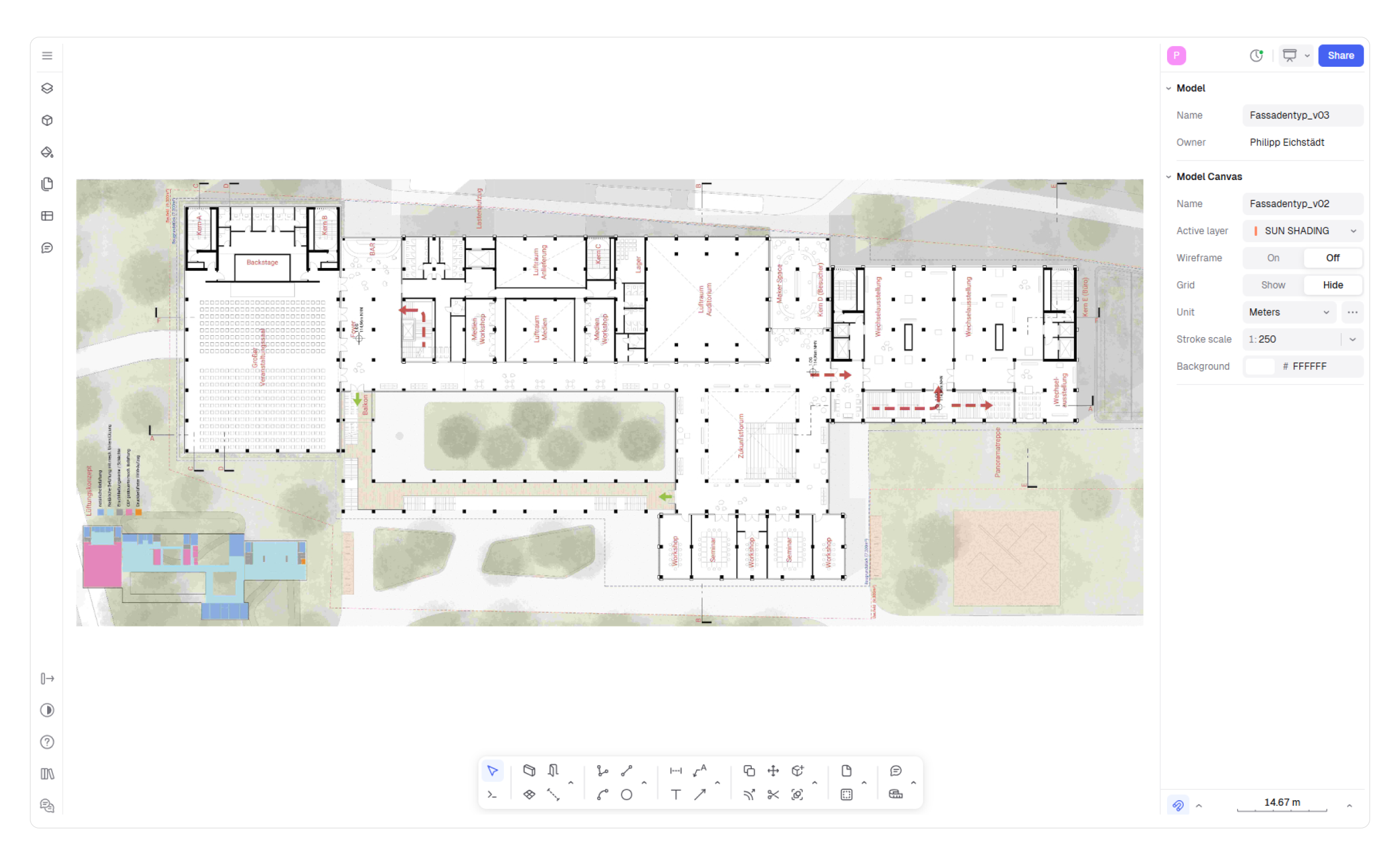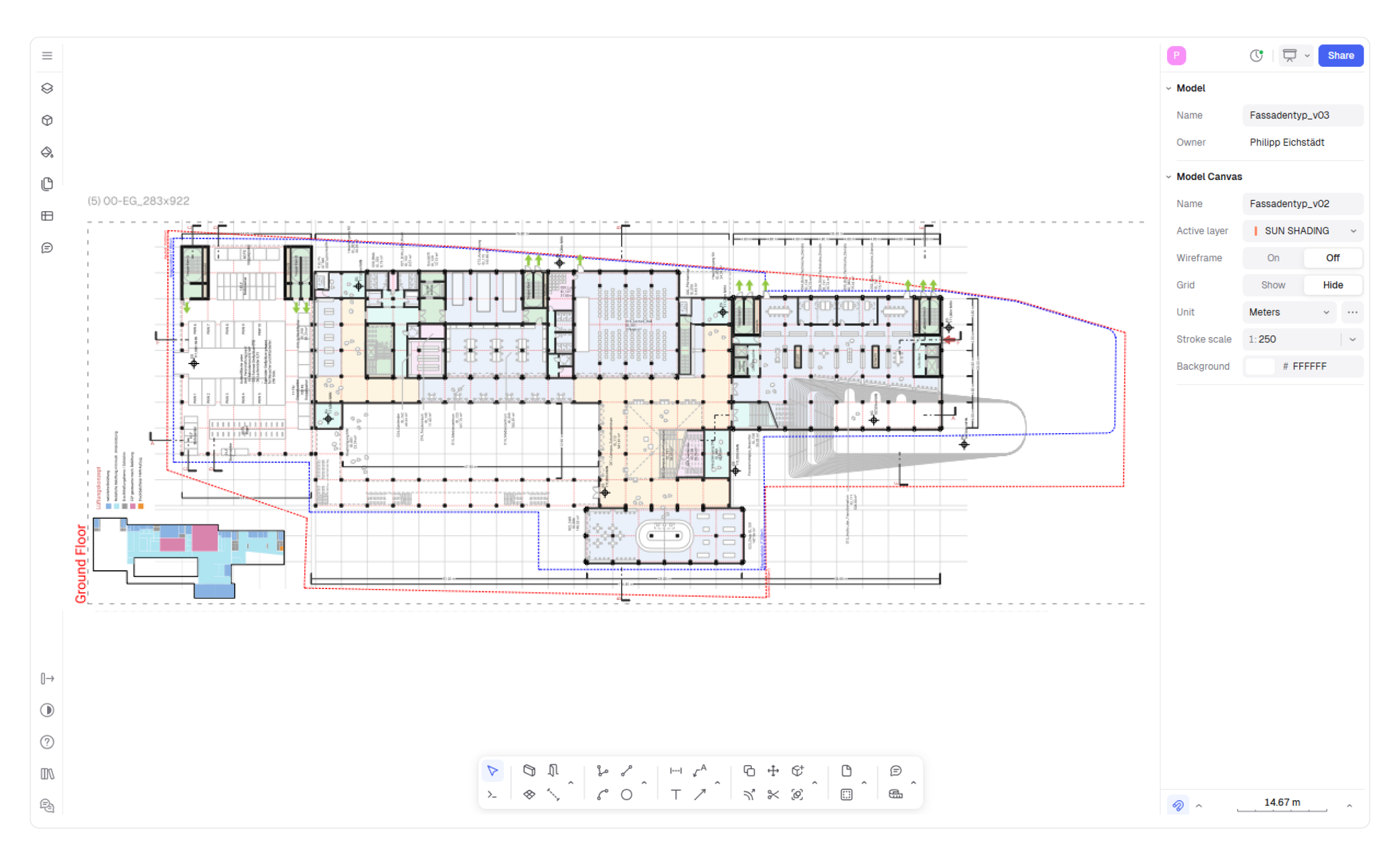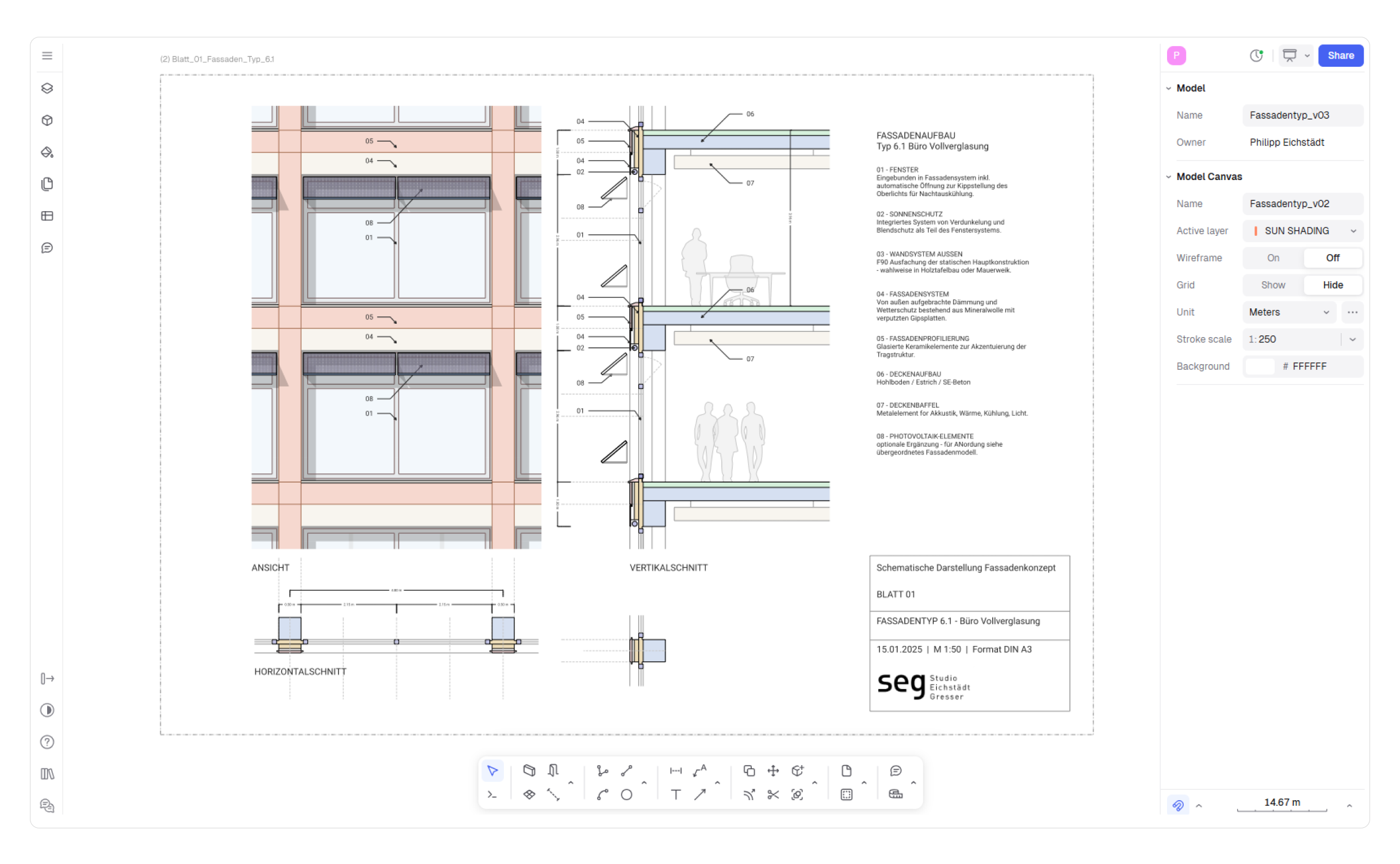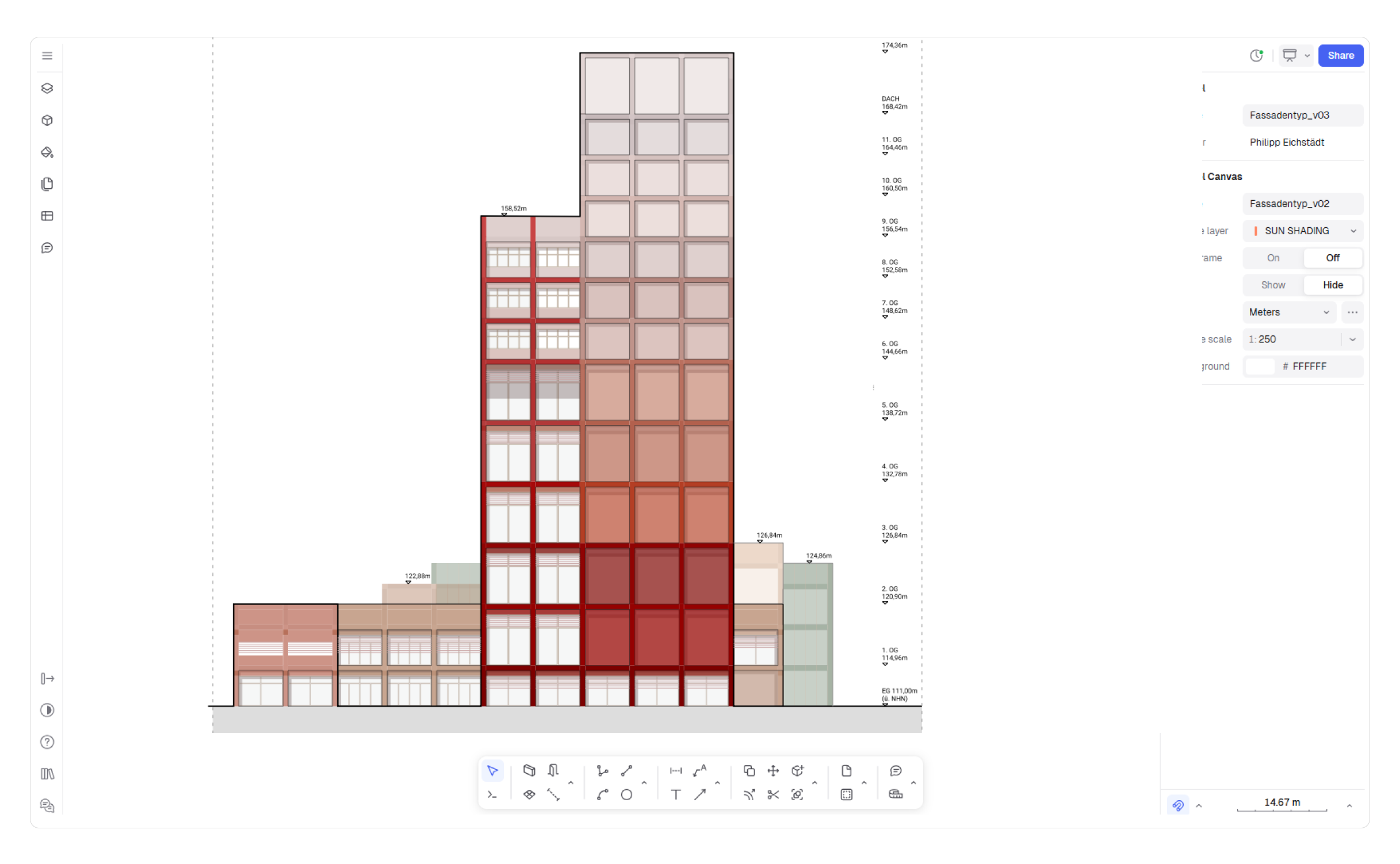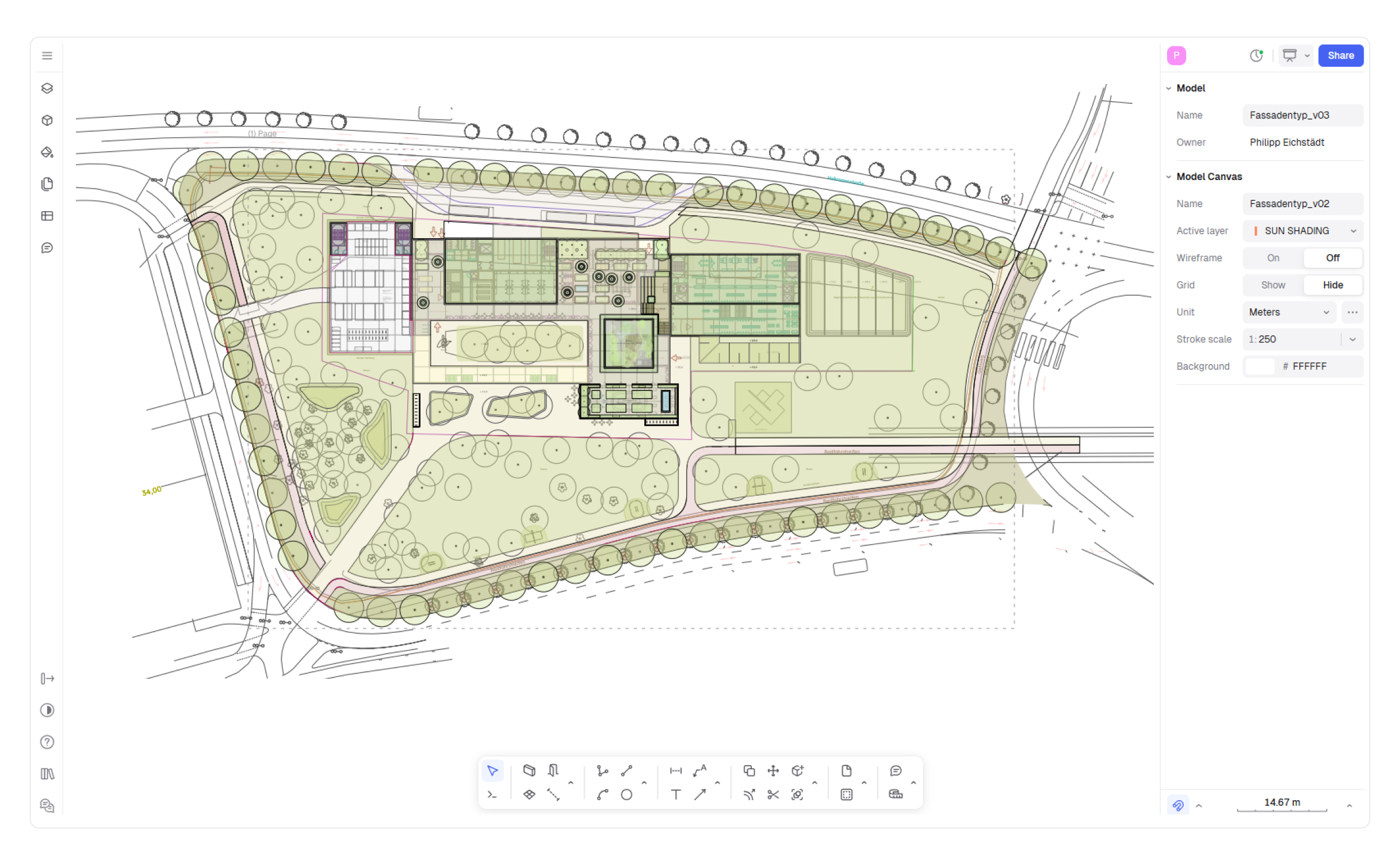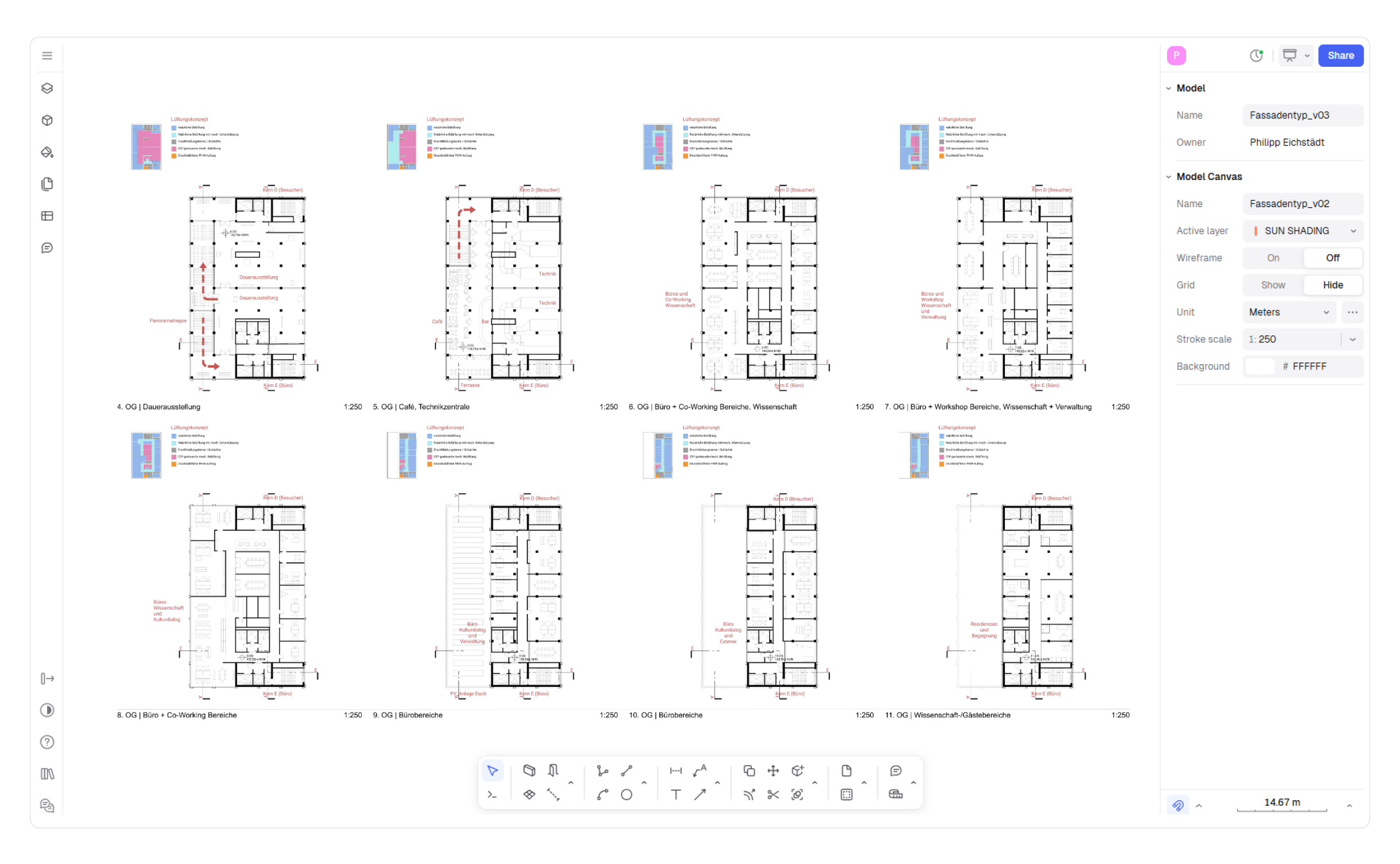How se.g Uses Rayon to Bring Clarity Back to 2D Design
Rayon's Q&A session with Philipp Eichstädt

"We rediscovered the power of a clear, beautiful 2D plan using Rayon. That clarity is invaluable, especially in early-stage design. It helps us focus on what matters, and makes it easier to communicate those ideas."
In this interview, we speak with architect Philipp Eichstädt, founder of se.g architects, a Berlin-based architectural practice specializing in large public sector projects. Philipp shares his perspective on designing institutional projects, the importance of communication between all project stakeholders, and his take on new tools emerging in the AEC ecosystem.
He also shares how Rayon helped his team reconnect with the fundamentals of 2D drawing in an industry dominated by complex 3D tools, enabling them to refine their core message and communicate design ideas with greater clarity.
Kindly introduce yourself and your studio.
I'm Philipp, and I run an architectural practice in Berlin called se.g. We primarily manage and steer large-scale public sector projects. These projects have become increasingly complex—more sustainability demands, public engagement, and a growing number of stakeholders. In 2023, we began exploring new tools that could help us work more efficiently. That's how we came across Rayon, which we'll be talking about today.
How do you understand and meet clients' needs in these complex projects?
Our work involves a wide range of stakeholders—municipalities, institutional clients, and user groups—not just a single decision-maker. So, a big part of the process is translating a highly specific and technical brief into a design that everyone can understand.
That translation—turning complexity into clarity—is crucial for getting buy-in early. It's not just about delivering a building but showing how their requirements are reflected in the design. A clear plan is key to keeping everyone aligned.
What does your typical design process look like?
We usually design from the inside out. That means starting with the functional and spatial requirements—finding the right sequence of rooms—and then shaping the building around that logic.
This is particularly important in public buildings like schools, hospitals, or airports. Once stakeholders can recognize their needs in a drawing or model, they feel part of the process. That early understanding prevents surprises later and makes the rest of the design and construction smoother.
Can you share an example of a creative solution your studio is proud of?
One project stands out. We were given a brief that assumed we'd need to clear a beautiful forest belt to make room for a large facility. But we challenged that assumption.
By reworking the program and creating a more compact design, we managed to meet all the client's functional needs, without destroying the forest. The final building is now tucked within the trees, almost hidden, and only revealed as you move through the landscape. That solution not only preserved nature but also reduced the building's footprint, material use, and long-term energy needs.
Let's talk about tools—how has Rayon improved your design process compared to what you used before?
Rayon has taken us back to the fundamentals of using 2D drawings, while most architectural software today is centered around 3D modeling. While that's powerful, it can also be overwhelming and filled with noise.
With Rayon, we rediscovered the power of creating a clear, beautiful 2D plan. That clarity is invaluable, especially in early-stage design. It helps us focus on what matters—space, function, flow—and makes it easier to communicate those ideas to clients and stakeholders. Clients and collaborators can get lost in complexity.
With Rayon, we can put a plan on the table that's visually clear and easy to understand. People look at it and say, "I get it." That moment of understanding is everything. It builds trust and alignment from the very beginning.
Where do you see the future of architectural tools heading?
We're at a turning point. BIM has enabled us to embed vast amounts of data into our designs, but often at the expense of clarity. I believe the future lies in intelligent tools that can extract just the essential information from a rich data model, showing each stakeholder only what they need to see.
Rayon feels like a step in that direction. It's lightweight, intuitive, and focused on communication rather than just production. That's crucial for large-scale projects where many voices need to be heard and understood.
More broadly, we're in a special moment in the AEC industry. A new generation of tools—like Rayon—is rethinking the fundamentals of how we design. Instead of building on legacy software from the 1990s, these platforms are born in the cloud era, made for today's collaborative, connected world. I'm hopeful this shift will make architectural design more accessible, more efficient, and ultimately more impactful.
Rayon is the fastest tool for creating perfect architectural drawings; it's the next-generation CAD software for interior designers and architects working in teams!
Want to know more about Rayon? Watch this 20-minute demo or check out Rayon's YouTube channel for more interviews and tutorials.
